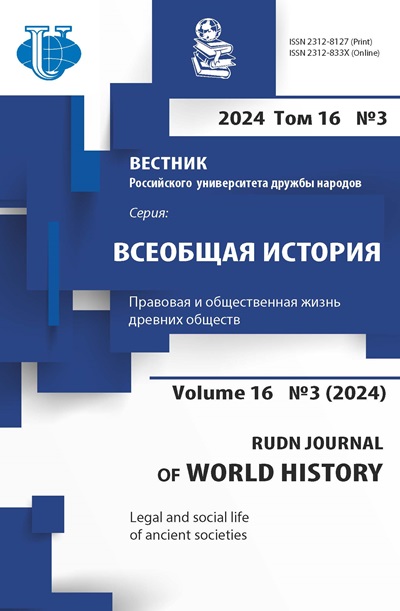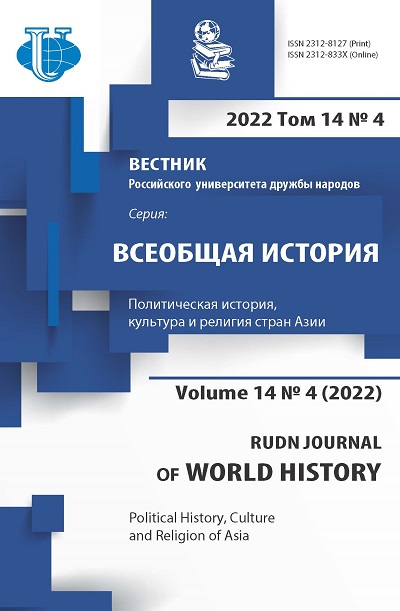История и перспективы сотрудничества России с Индией и Бангладеш в сфере атомной энергетики
- Авторы: Михайлов С.А.1
-
Учреждения:
- Российский университет дружбы народов
- Выпуск: Том 14, № 4 (2022): Политическая история, культура и религия стран Азии
- Страницы: 427-442
- Раздел: Современный мир
- URL: https://journals.rudn.ru/world-history/article/view/33152
- DOI: https://doi.org/10.22363/2312-8127-2022-14-4-427-442
Цитировать
Полный текст
Аннотация
Исследуется сотрудничество Российской Федерации с Индией и Народной Республикой Бангладеш в сфере атомной энергетики, в контексте ее истории, существующего уровня и ближайших перспектив. Автор констатирует, что за последнее время (начиная с 2009-2014 гг.) отраслевое взаимодействие существенно укрепилось, а реализация ключевых совместных атомных проектов интенсифицировалась, что, безусловно, положительно сказывается на двусторонних отношениях. Взаимовыгодные и успешные экономические проекты являются залогом консенсуса и взаимопонимания в условиях стремительных изменений геополитической ситуации в мире в 2022 г. Украинский кризис и последовавшие в связи с ним масштабные экономические санкции в отношении России негативно сказались на экономиках большинства стран мира. Вопросы энергетической безопасности в этой ситуации стали одними из ключевых. Продолжение и развитие контактов в атомной сфере приобретает принципиально иную значимость, открывая перед странами Южной Азии новые возможности для укрепления собственной безопасности и независимости. Накопленный партнерский опыт релевантного сотрудничества РФ и ЮА в атомной области может способствовать интенсификации контактов между странами, довольно важных в нынешнее время коренных изменений мирового порядка. Актуальность исследования заключается в изучении возможностей практического применения накопленного опыта и потенциала взаимодействия РФ с Индией и Бангладеш с целью определения оптимальных путей и направлений сотрудничества в атомной сфере и его дальнейшей интенсификации.
Об авторах
Сергей Александрович Михайлов
Российский университет дружбы народов
Автор, ответственный за переписку.
Email: wetter248@mail.ru
ассистент кафедры всеобщей истории 117198, Россия, Москва, ул. Миклухо-Маклая, 6
Список литературы
- Росатом (продукция и услуги): новые направления бизнеса. URL: https://rosatom.ru/production/prochie-uslugi-i-produktsii/ (дата обращения 01.07.2022).
- Lavkush Mishra. Urzon ke tyohar par vishesh: vishwa ke 3 supar powers ko parmanu reactor de raha Surat. 14.11.2020. URL: https://www.bhaskar.com/local/gujarat/news/suratgiving-nuclear-reactors-to-3-super-powers-of-the-world-127913144.html (дата обращения 01.07.2022). (На хинди).
- Рогинко C. Итоги Парижской конференции по климату 2015 г. URL: https:// cyberleninka.ru/article/n/itogi-parizhskoy-konferentsii-oon-po-klimatu-2015-goda/viewer (дата обращения 25.06.2022).
- АЭС «Куданкулам». URL: http://www.atominfo.ru/archive_nppkudan.htm (дата обращения 01.07.2022).
- Тоуфик-и-Илахи Чоудхури: АЭС «Руппур» — это мечта Бангладеш. 15.01.2018. URL: https://ria.ru/20180115/1512498700.html (дата обращения 25.06.2022).
- Толчеева В.А., Дхар А.П. Ядерная инфраструктура в Бангладеш как фактор устойчивого развития. 22.06.2021. URL: https://rusatomservice.ru/news/razvitie-yadernoyinfrastruktury-narodnoy-respubli/ (дата обращения 01.07.2022).
- Mohammad Shawkat Akbar. The making of Rooppur Nuclear Power Plant. 26.01.2022. URL: https://www.tbsnews.net/bangladesh/energy/making-rooppur-nuclear-power-plant-362416 (дата обращения 01.07.2022).
- 13 Octobare Alexandr Mantytsky ar Sheikh Hasinar beithok ghotlo. 14.10.2021. URL: https://www.dailyjanakantha.com/details/article (дата обращения 01.07.2022). (На бенгальском).
- Hasan Mahmud. Rooppur Paromanobik Biddutkendro hote jacche labhjonok o value added prokolpo. 18.05.2022. URL: https://www.risingbd.com/risingbd-special/news/458021 (дата обращения 01.07.2022).(На бенгальском).
- Эксперты: сотрудничество по АЭС между Россией, Бангладеш и Индией выгодно этим странам. 02.03.2018. URL: https://tass.ru/ekonomika/5001722 (дата обращения 01.07.2022).
- Rashiar biniyog chai Bangladesh. 13.12.2021. URL: https://www.prothomalo.com/business/economic6 (дата обращения 01.07.2022). (На бенгальском).
- Ishwardir artho samajik shomossha kromagoto shomadhan hocche. 13.07.2021. URL: http://www.u71news.com/?page=details&article=20.179645 (дата обращения 01.07.2022). (На бенгальском).
- Shafiqul Islam. Paromanu shokti theke biddut ekti dirghosthayi jalani nirapotta, shasroyi o poribeshbandhob. 16.01.2022. URL: https://www.dailyjanakantha.com/details/article/ (дата обращения 01.07.2022).(На бенгальском).
- Rooppur Paromanobik Biddutkendro: shomossha o shombhabona. 10.05.2022. URL: https://gaannbangla.blogspot.com/2022/05/ruppoor-nuclear-power-plant.html (дата обращения 01.07.2022).(На бенгальском).
- Pran-prokriti binashi shob prokolpo batiler dabi jatiyo committee. 24.04.2021. URL: https://www.banglatribune.com/ (дата обращения 01.07.2022).(На бенгальском).
- RNPP theke biddut shubidha pabe 18 lakh poribar. 21.09.2021. URL: https://www.kalerkantho.com/online/country-news/2021/09/16/1074047 (дата обращения 01.07.2022). (На бенгальском).
- Mohiuddin Thaka. Rooppure kaje goti, chinta shonchalon line. 08.08.2021. URL: https://www.prothomalo.com/bangladesh/ (дата обращения 01.07.2022).(На бенгальском).
- В 73-й День республики российские партнеры поздравляют индийских друзей. 25.01.2022. URL: https://rg.ru/2022/01/25/v-73-j-den-respubliki-rossijskie-partnerypozdravliaiut-indijskih-druzej.html (дата обращения 01.07.2022).













